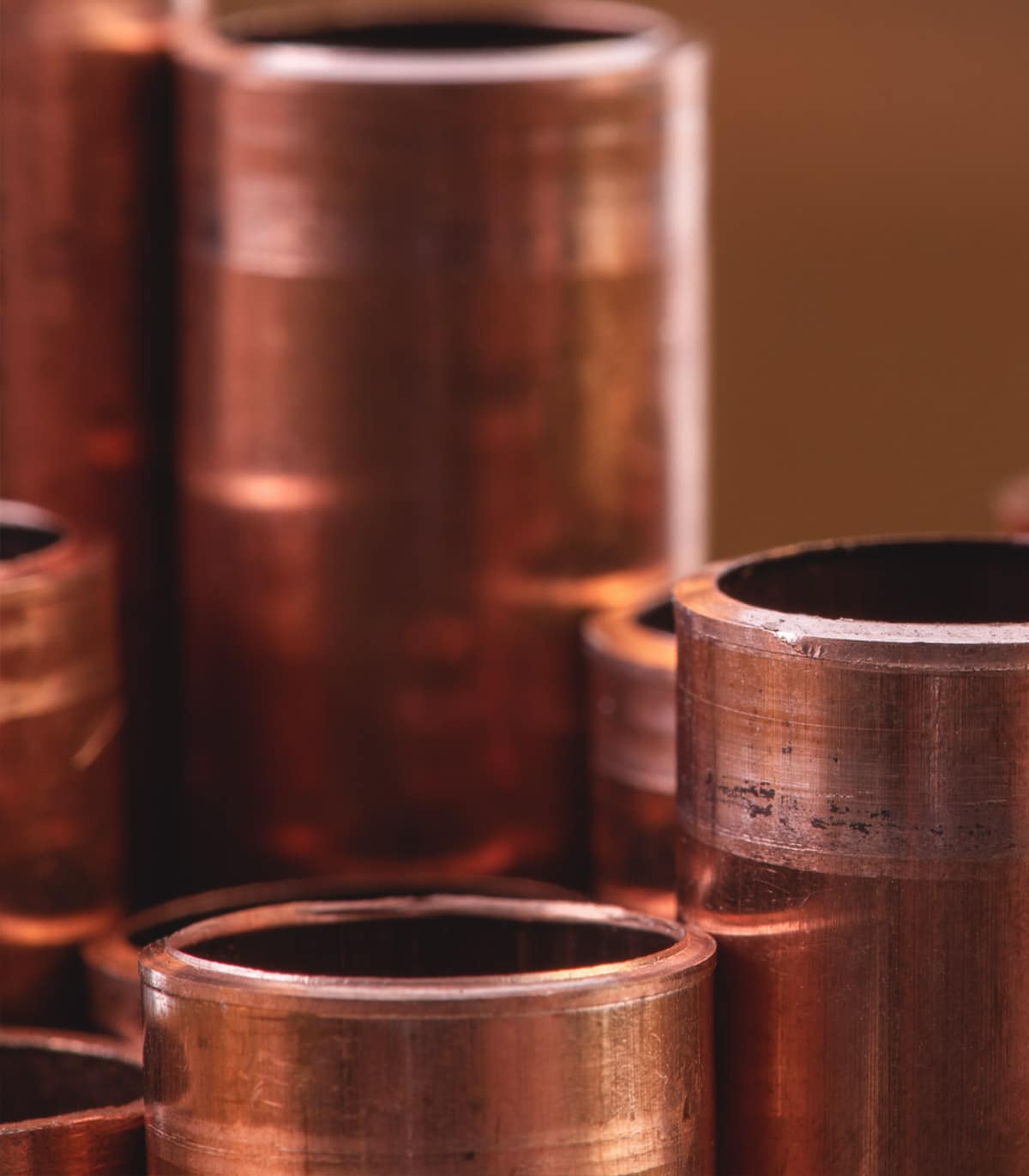The Ultimate Overview to Sustainable Living with Eco-Friendly Copper Products
The Ultimate Overview to Sustainable Living with Eco-Friendly Copper Products
Blog Article
Just How Copper Products Contribute to Lasting Practices in Numerous Sectors
In sustainable energy systems, for instance, copper enhances the capability of solar and wind technologies, while its application in building reduces waste with durability. As sectors look for to take on even more sustainable practices, the function of copper might prove critical in achieving ecological objectives.
Copper in Renewable Power
Copper plays a vital duty in the advancement of renewable resource technologies, acting as a vital conductor in numerous applications. Its exceptional electrical conductivity and resistance to deterioration make it an ideal material for electrical wiring, which is essential in solar panels, wind generators, and energy storage systems. In solar photovoltaic or pv systems, copper is made use of in the affiliations and wiring, making it possible for reliable power conversion from sunlight to electricity.
In wind energy, copper is important to the generators and transformers that convert kinetic power into electrical energy, ensuring optimal efficiency and dependability. Additionally, the demand for electrical cars (EVs) is boosting, with copper being a vital element in batteries, motors, and charging facilities. The transition to EVs dramatically improves the demand for copper, as these cars generally utilize 4 times much more copper than traditional inner combustion engine vehicles.
As the world seeks to mitigate environment adjustment and shift to lasting energy resources, copper's duty comes to be progressively important. The product not just boosts the performance and resilience of renewable resource systems but additionally sustains the more comprehensive objective of minimizing greenhouse gas discharges and promoting a sustainable future.
Eco-Friendly Building And Construction Products
Over the last few years, there has actually been a remarkable change in the direction of the fostering of environmentally friendly building materials in response to growing environmental concerns. This modification is motivated by the requirement for lasting options that lessen ecological footprints while maintaining architectural stability and visual appeal.
Copper, recognized for its resilience and recyclability, has become a principal in this field. It can be used in roofing, pipes, and electrical systems, adding to power performance and minimizing waste. Copper's long life indicates fewer substitutes with time, additional improving its sustainability profile.
Additionally, products such as bamboo, recovered timber, and reused steel are acquiring popularity. These alternatives not only provide minimized environmental influence yet also promote source conservation. As constructing codes increasingly highlight sustainability, engineers and building contractors are integrating these materials into their tasks, promoting technology in layout.
The increasing adoption of eco-friendly building and construction products mirrors a broader dedication to sustainability in the developed environment. By prioritizing these products, the building and construction sector can significantly reduce its carbon impact, straighten with regulative criteria, and support a healthier environment for future generations. This pattern notes a critical step towards a more lasting future in construction.
Copper's Function in Medical care
Recent research studies have actually highlighted the considerable role of copper in health care settings, especially because of its antimicrobial properties. Copper surface areas have been shown to reduce the presence of pathogens, consisting of microorganisms and viruses, by approximately 99.9% within a short period. This impressive efficacy makes copper an invaluable product for high-touch surfaces in health centers, such as doorknobs, bed rails, and IV poles, consequently adding to improved infection control procedures.
Along with its direct antimicrobial results, copper also plays a duty in the wider context of health center sustainability (Copper Products). By including copper right into medical devices and furnishings, healthcare facilities can lower the occurrence of healthcare-associated infections (HAIs), which not just boosts patient end results but likewise reduces the costs related to prolonged health center remains and additional treatments
Moreover, copper's durability and recyclability align with sustainable practices, enabling accountable source monitoring. As medical care systems progressively focus on both client safety and security and ecological stewardship, the assimilation of copper products is coming to be more widespread. This twin benefit underscores copper's crucial payment to a healthier, safer, and a lot more sustainable healthcare setting.
Sustainability in Transport

Furthermore, copper's longevity and rust resistance add to the durability of transport infrastructure (Copper Products). In rail systems, for example, copper elements enhance the reliability and performance of signaling and power systems, important for minimizing hold-ups and energy intake. In addition, copper's duty in eco-friendly energy systems, such as solar and wind, sustains lasting transportation options try these out by providing clean power for electric transportation options
Investments in copper technology not just foster sustainability yet likewise stimulate financial growth and work development in eco-friendly sectors. As sectors make every effort to meet rigid environmental policies, the application of copper items in transportation becomes a critical strategy in attaining sustainability objectives and promoting a cleaner, a lot more efficient future.
Copper and Round Economy
As the world increasingly accepts sustainability, the function of copper in the circular economic climate comes to be ever much more substantial. Copper's innate buildings-- such as its conductivity, recyclability, and sturdiness-- setting it as a vital product in a resource-efficient economy. The round economy aims to reduce waste and make the most of source usage through recycling and reusing materials, and copper excels in this regard.
The steel can be reused forever without loss of quality, making it an excellent candidate for lasting methods throughout various sectors, including building and construction, electronics, and renewable resource. By reprocessing and recovering copper from end-of-life products, markets can significantly reduce the requirement for virgin products, official source thus lowering ecological effects connected with mining and processing.
In addition, the integration of copper into circular economic climate frameworks not only preserves sources however additionally cultivates development. Organizations that prioritize copper recycling add to a much more lasting supply chain, improving their competitiveness while aligning with regulative needs and customer choices for environmentally accountable items.
Final Thought
To conclude, copper products substantially contribute to sustainable techniques across several sectors. Their vital role in boosting eco-friendly energy modern technologies, advertising eco-friendly building materials, supporting infection control in medical care, helping with sustainable transport, my response and personifying the concepts of a circular economic climate emphasizes the adaptability and importance of copper. By integrating copper into various applications, sectors can accomplish better effectiveness, decrease environmental influence, and straighten with global sustainability goals, inevitably fostering a more lasting future.

Copper's excellent conductivity makes it a favored material in electrical car (EV) systems, improving power efficiency and performance. Furthermore, copper's role in sustainable energy systems, such as solar and wind, sustains lasting transport services by supplying tidy power for electric transportation options.
Their vital duty in boosting sustainable power technologies, promoting environment-friendly building materials, supporting infection control in healthcare, facilitating lasting transportation, and personifying the principles of a round economic climate highlights the adaptability and relevance of copper.
Report this page